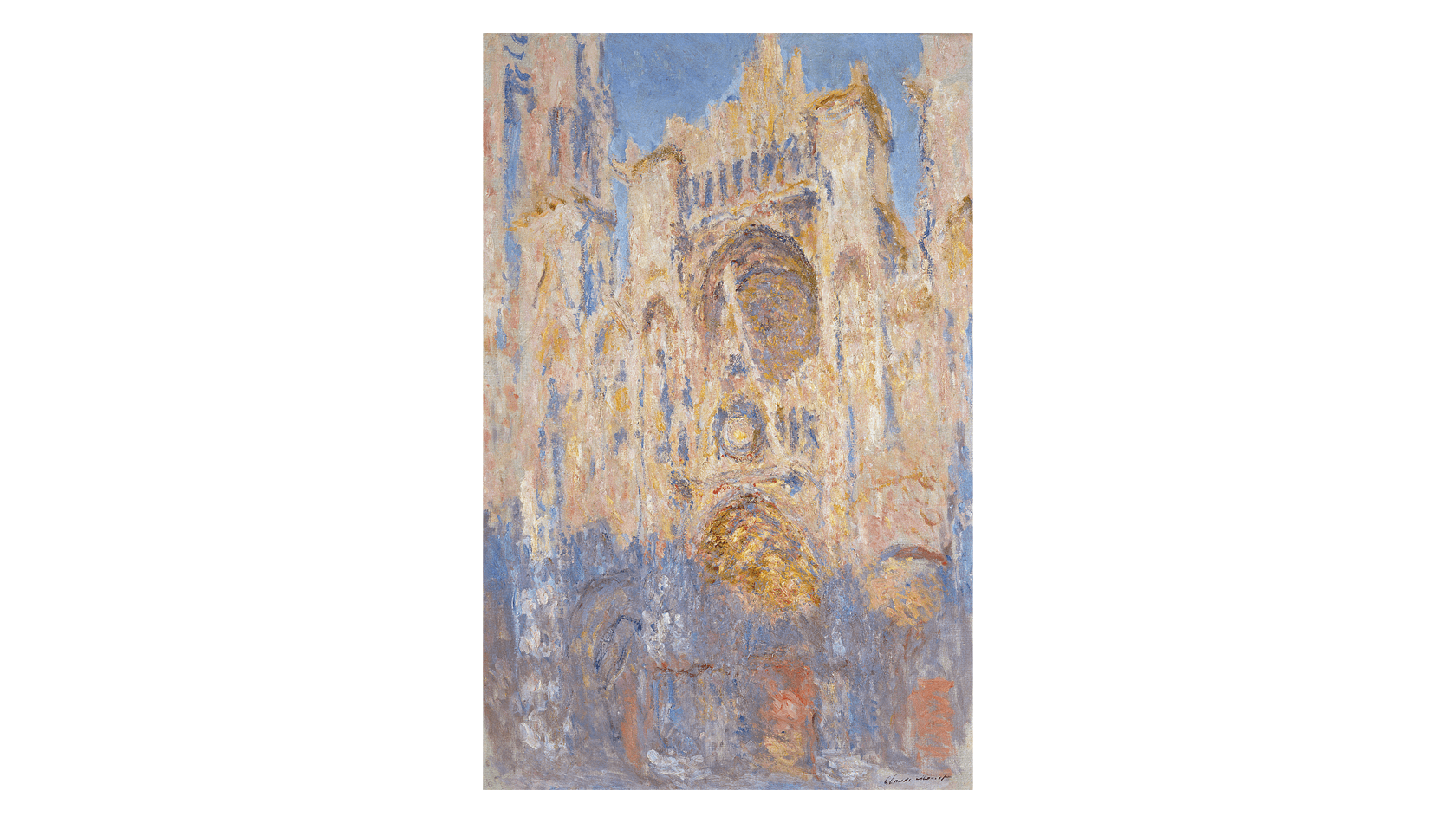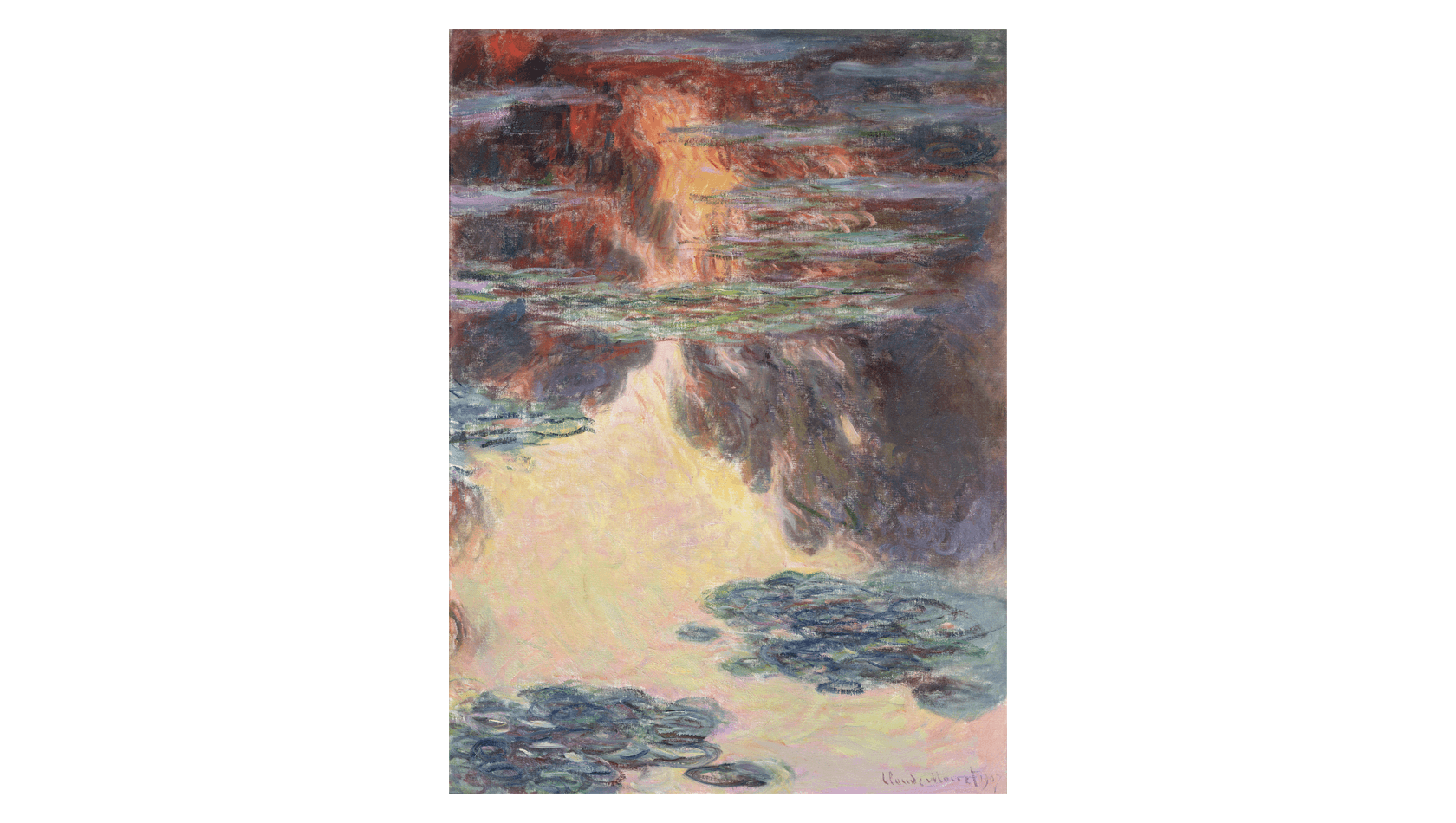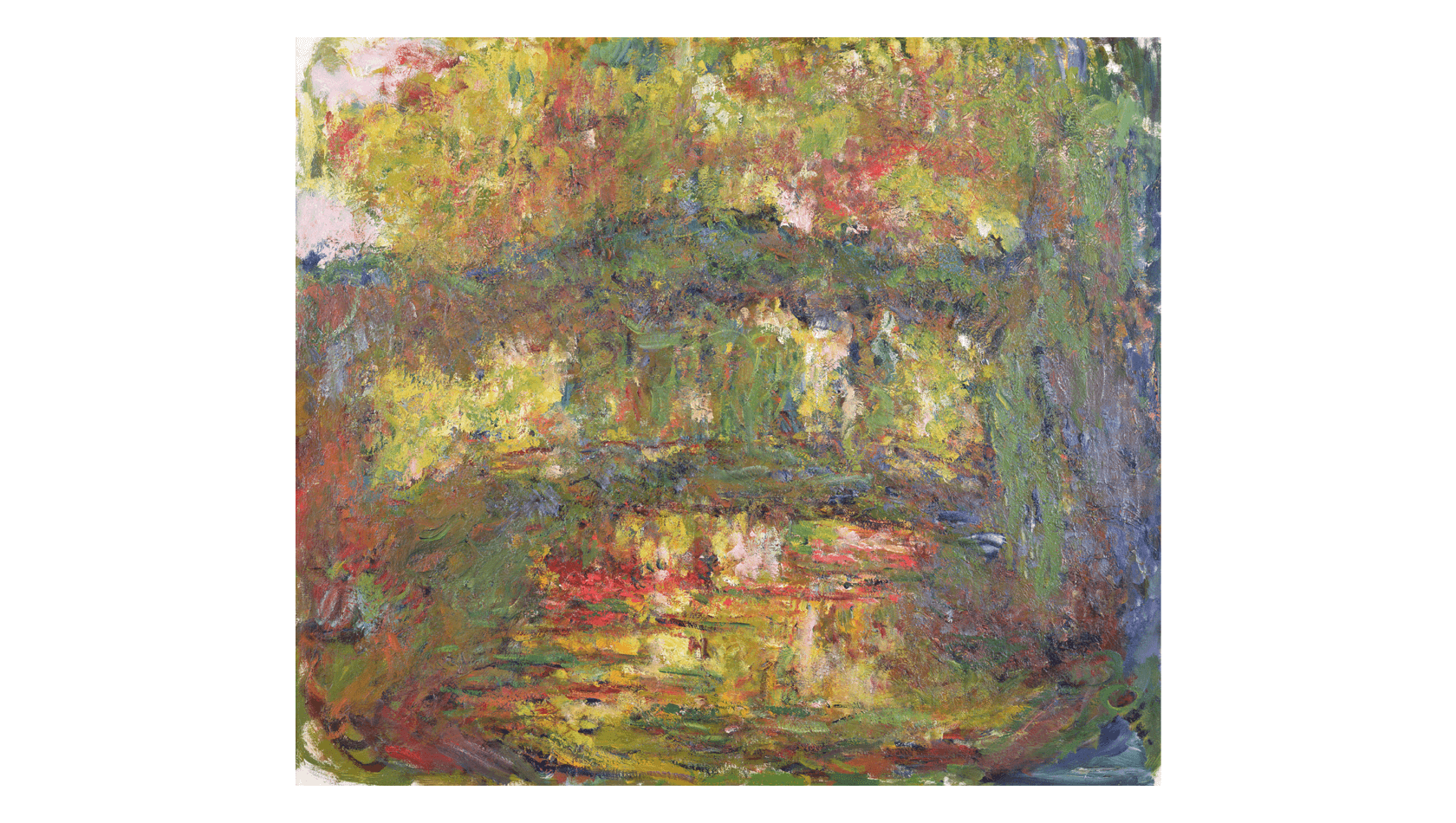STARTS
Oct 28, 2023
Ends
Mar 10, 2024
22
Ticket includes entry to Evelyn Hofer: Eyes on the City
L14-15
Monet and his Modern Legacy
Monet and his Modern Legacy
In honor of the 150th anniversary of the birth of Impressionism, the Nelson-Atkins presents Monet and his Modern Legacy—an exhibition exploring Claude Monet’s transformative impact on a later generation of American artists. Featuring three remarkable loans from the Musée Marmottan Monet in Paris, and additional works by Monet, this show illuminates the paintings and their far-reaching influence on artists like Sam Francis, Helen Frankenthaler, Jules Olitski, and Jean-Paul Riopelle, among others.
Monet and his Modern Legacy not only showcases Claude Monet’s influence, but also delves into the reappraisal and significance of the artist’s late works. These paintings, including his expansive Water Lilies canvases created in his mid-70s until his passing at age 86, embodied an immersive nature that anticipated the Modernist departure from traditional easel-bound art, marking a pivotal shift in the approach to painting. While today, Monet’s late works are beloved by art enthusiasts worldwide, during Monet’s life, they were met with confusion and dismissal. Critics found them messy, blaming the artist’s failing eyesight for the perceived chaos.
During the 1950s, however, American museums, collectors, and critics transformed their perception of Monet’s late style. They recognized its brilliance and began to connect it with the emerging movement of Abstract Expressionism. Indeed, inspired by Monet’s innovative use of color, gestural forms, space, scale, and atmosphere, many Abstract Expressionist artists embarked on their own radical artistic journeys, creating unique artworks—many of which will be on view for the first time in over thirty years—that bear the unmistakable influence of Claude Monet and his enduring artistic legacy.
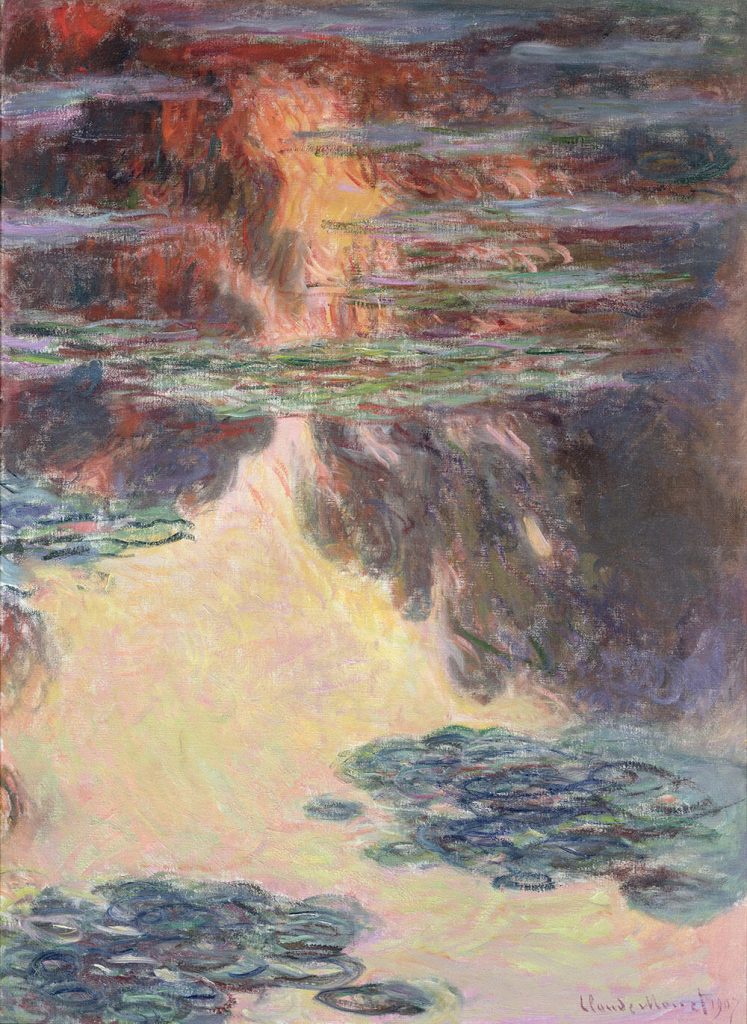
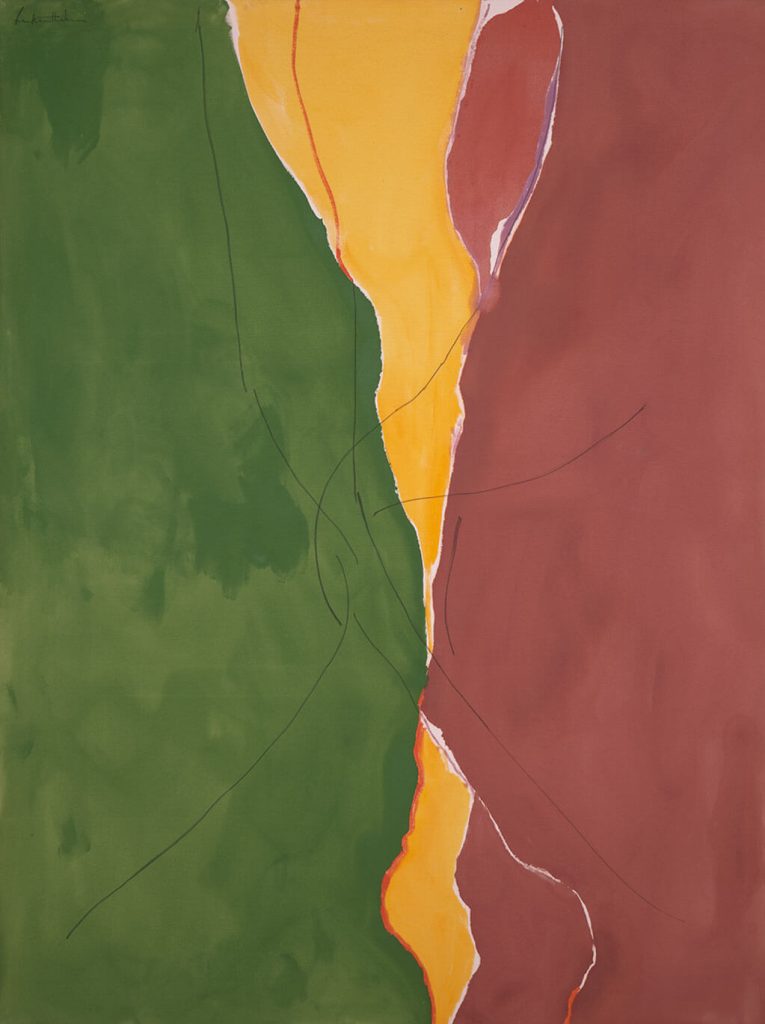
View the Spencer Art Reference Library Guide here.
Organized by The Nelson-Atkins Museum of Art with the support of the Musée Marmottan Monet and the Academy of Fine Arts, Paris. This exhibition is generously supported by Paul DeBruce and Linda Woodsmall-DeBruce, the Muriel McBrien Kauffman Family Foundation, the Marion and Henry Bloch Family Foundation, Shirley Bush Helzberg, Evelyn Craft Belger and Richard Belger, Nancy and Rick Green, Neil Karbank and Gretchen Calhoun, the Atterbury Family Foundation, Liz and Greg Maday, Husch Blackwell LLP, and Hallmark Cards, Inc.
Image Credits:
Header Detail: Claude Monet (French, 1840 – 1926) Mill at Limetz, 1888. Oil on canvas, 36 3/4 x 29 in. (93.4 x 73.7 cm). The Nelson-Atkins Museum of Art, partial bequest of Ethel B. Atha, 38-1986.
Claude Monet (French, 1840–1926). Water Lilies, 1907. Oil on canvas, 39 3/8 × 28 3/4 inches (100 × 73 cm). Musée Marmottan Monet, Paris, Michel Monet bequest, 1966, Inv. 5168.
Helen Frankenthaler (American, 1928–2011). Cable, 1971. Acrylic on canvas, 108 x 81 inches (274.32 x 205.74 cm), The Nelson-Atkins Museum of Art, Gift of the Friends of Art, F78-37. © Helen Frankenthaler / Artists Rights Society (ARS), New York.
Slideshow: Claude Monet (French, 1840 – 1926). Rouen Cathedral, Sunlight Effect, End of the Day, 1892. Oil on canvas, 39 3/8 x 25 ¾ inches. Musée Marmottan Monet, Paris, Michel Monet bequest, 1966, Inv. 5174.
Claude Monet (French, 1840 – 1926). Water Lilies, 1907. Oil on canvas, 39 x 29 inches. Musée Marmottan Monet, Paris, Michel Monet bequest, 1966, Inv. 5168.
Claude Monet (French, 1840 – 1926). Japanese Bridge, 1918. Oil on canvas, 35 x 39 3/8 inches. Musée Marmottan Monet, Paris, Michel Monet bequest, 1966, Inv. 5092.
PROGRAMS
Book Discussion: Fierce Poise
- Saturday, Feb. 3 | 11 a.m.–Noon
- Spencer Art Reference Library
- Free
Join curator Aimee Marcereau DeGalan, the Louis L. and Adelaide C. Ward Senior Curator of European Arts, and Spencer Art Reference Library staff Amelia Nelson and Stephanie Lawrence in a discussion of Alexander Nemerov’s 2021 book Fierce Poise: Helen Frankenthaler and 1950s New York. Fierce Poise is described as “an exhilarating ride through New York’s 1950s art scene and a brilliant portrait of a young artist through the moments that shaped her”. Nemerov will speak at the museum on Thursday, January 11, 2024.
Tivoli Presents: I, Claude Monet
- Friday, Feb. 9 at 7 p.m. and Sunday, Feb. 11 at 2 p.m.
- Atkins Auditorium
- Public $13 | Members $10
Screening in conjunction with the featured exhibition Monet and His Modern Legacy. Friday intro by Aimee Marcereau DeGalan, Senior Curator, European Arts.
From Paris and Le Havre to London and Venice, filmmaker Phil Grabsky goes on a journey to profile Claude Monet as he uses 2,500 letters written by the celebrated artist to gain an intimate insight into his life.
“Un” Plein Air Sketch Night
- Friday, Feb. 16 | 6:15–7:45 p.m.
- Rozzelle Court
- Public $25 | Members $20
Take a cue from Monet’s paintings created en plein air (outdoors) while escaping the winter chill with this “un”plein air evening of spontaneous sketching indoors. Artist and educator Anthony High will teach you techniques for capturing the twinkling lights and architecture of Rozzelle Court using watercolor pencils. All supplies are provided for the evening, along with a free water lily mocktail. A glass of French rosé and other sips and snacks are available for purchase.
From Forgotten to Famous: Monet’s Late Work and How “Water Lilies” Came to Kansas City
- Thursday, Feb. 22 | 6–7 p.m.
- Atkins Auditorium
- Public $10 | Members $8
The paintings that Claude Monet created in the last decade of his life may be beloved worldwide today, but many of his contemporaries found them chaotic. They dismissed Monet’s increasingly abstract style as the product of an aging man with failing eyesight, out of touch with the art world. Then, in the mid-1950s, American museums, collectors, and critics gained new appreciation for Monet’s late paintings and recognized them as important forerunners to the Abstract Expressionist movement.

